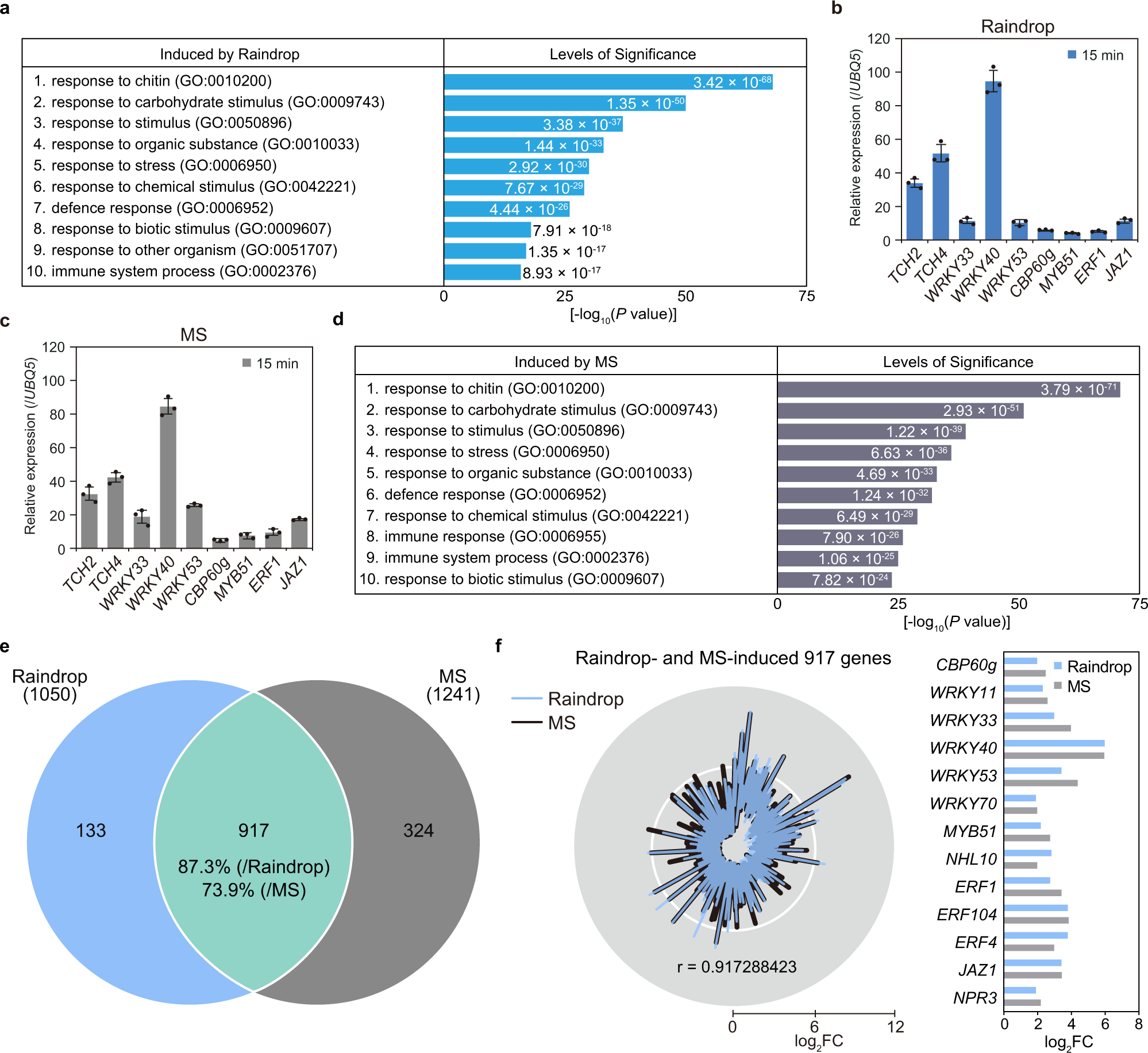博文
Nature Com | 拟南芥毛状体细胞引起机械刺激诱导的免疫反应
||
Mechanosensory trichome cells evoke a mechanical stimuli–induced immune response in Arabidopsis thaliana
第一作者:Mamoru Matsumura
第一单位:日本名古屋大学
通信作者:Yasuomi Tada
背景回顾:Perception of pathogen-derived ligands by corresponding host receptors is a pivotal strategy in eukaryotic innate immunity. In plants, this is complemented by circadian anticipation of infection timing, promoting basal resistance even in the absence of pathogen threat.
通过相应的宿主受体识别病原体衍生的配体是真核生物天然免疫中的一个关键策略。在植物中,这一点得到了对感染时间的昼夜预测的补充,即使在没有病原体威胁的情况下也能促进基础抗性。
研究内容:Here, we report that trichomes, hair-like structures on the epidermis, directly sense external mechanical forces, including raindrops, to anticipate pathogen infections in Arabidopsis thaliana.
该研究报告说,毛状体,表皮上的毛状结构,直接感知外部机械力,包括雨滴,以预测拟南芥中的病原体感染。
主要发现:Exposure of leaf surfaces to mechanical stimuli initiates the concentric propagation of intercellular calcium waves away from trichomes to induce defence-related genes. Propagating calcium waves enable effective immunity against pathogenic microbes through the CALMODULIN-BINDING TRANSCRIPTION ACTIVATOR 3 (CAMTA3) and mitogen-activated protein kinases.
叶表面暴露在机械刺激下,启动远离毛状体的细胞间钙波的同心传播,以诱导与防御相关的基因。传播钙波可通过钙调素结合转录激活因子3(CAMTA3)和丝裂原活化蛋白激酶(MAPKs) 对病原微生物产生有效免疫。
结论:We propose an early layer of plant immunity in which trichomes function as mechanosensory cells that detect potential risks.
该研究提出了一种早期的植物免疫层,在这一层中,毛状体起机械感觉细胞的作用,检测潜在的风险。


原文链接:https://www.nature.com/articles/s41467-022-28813-8
作者介绍:Yasuomi Tada 日本名古屋大学
Journal: Nature Communation
Published date: March 03, 2022
https://blog.sciencenet.cn/blog-3420203-1329109.html
上一篇:PNAS-bZIPPER1A介导的水稻种子活力调控
下一篇:The Plant Cell:植物胚胎亲本“春化记忆”重置与基因表达重编程的分子机制